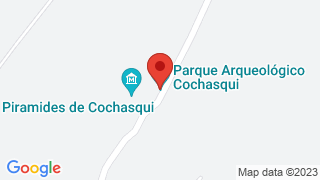Cochasquí, Archaeological Park
What should you know?
Behind every ancestral culture of Ecuador there is a great story to tell. Can you imagine the Caranquis asked the sun not to go, for that they performed ceremonies called inti watana, where people tied the power stones to the sun, those stones were what formed the Cochasqui pyramids.
This ritual was performed by the two solstices of the year the Inti Raymi (June 21) and Kapak Raymi (December 21). At that time the sun is over the tropics of Capricorn or Cancer, that is, at its most distant point of the equator.
The Caranquis to more of these ceremonies performed another, the Pawkar Raymi, in the March equinox, where at noon the sun stopped just above the equinoctial line and did not cast shadow. That was the time to be reborn and to recreate. The protagonist was the fire, to appropriate the Mushuk Nina, the new fire of the sun.
Among the mystical, spiritual and tourist we find the most important vestiges of the Caranqui culture, in the Cochasqui Archaeological Park, which settled in the north of the province of Pichincha and south of Imbabura, between the seventh and sixteenth centuries. There are a total of 15 pyramids, 21 funerary mounds, 4 site museums and 83.9 hectares of archaeological area, which make up the Cochasquí Archaeological Park, located in the Tocachi parish, Pedro Moncayo canton, north of the Pichincha province.
Now it is not only enough to imagine, we must visit the complex that is currently an important tourist attraction, with an archeological site, two ethnographic museums, an ethno-botanical garden and a didactic with musical instruments, weapons and game elements. Museums retain samples of ethnographic importance that recreate an indigenous environment of pre-Hispanic homes. On the other hand, the archeological site has pieces of pottery, lithic and obsidian, in a construction of cangahua, reed, moor straw, wood and others.
Also, in the Archaeological Park inhabits a group of llamas that freely walk throughout the day; They are so peaceful that tourists do not hesitate to photograph themselves with them, in the middle of the wonderful surroundings. There is also has a viewpoint from where you can see the Complex and astronomical evenings are made by the wonderful view of the surrounding valleys and hills.
A store, parking with capacity for 40 vehicles and 24 hour security, are part of the service of the place.
In one visit you enjoy adventure, nature and culture. An advantage of living in such a diverse country with many contrasts.
Stay to sleep in Cochasquí
The Cochasquí Archaeological Park has a camping and lodging space for 64 people. There are three two-room cabins with capacity for four people and a camping area for 20 tents. In addition, it has barbecue huts, sanitary batteries and hot showers.
Attention schedule
Specialized bilingual guides attend every day of the year without interruption, from 08:30 to 16:30, providing information and accompanying tours of the monumental area and museums. Admission to Cochasquí Park has a cost of $ 3.00 for foreigners, $ 1.00 for nationals, $ 0.50 for students and $ 0.20 for children and senior citizens..
How to get to Cochasqui?
From Quito at the ' La Ofelia ' station you take a bus from the company 'Flor del Valle', which goes to Cayambe. Once there, you take a bus of the company ' Mojanda ' that leads to Tabacundo, and then take the bus from the Malchingui company, which takes you to the complex that is one kilometer away.
If you travel in your own vehicle you must take the Quito - Collas - Tababela - Yaruquí - El Quinche - Guayllabamba - Cochasquí toll road. From that point you must take a cobbled path that covers a distance of 8 km to reach the Complex.

Publicado en:







